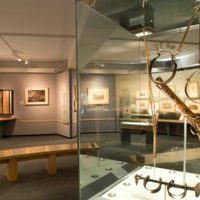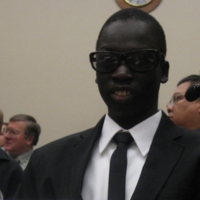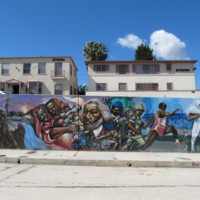
National Maritime Museum
The National Maritime Museum is the largest maritime museum in the world. It forms part of the Royal Museums Greenwich UNESCO World Heritage Site. The NMM houses ten galleries that all showcase Britain’s Maritime History. Its mission is 'to enrich people’s understanding of the sea, the exploration of space, and Britain's role in world history’. ‘The Atlantic Worlds Gallery,' launched in 2007 for the commemoration of the bicentenary, charts the interconnections between Britain, Africa and the Americas between 1600 and 1850. The gallery is about the movement of people, goods and ideas across and around the Atlantic Ocean from the 17th century to the 19th century. The connections created by these movements affected people across three continents, impacting on their cultures and communities and shaping the world we live in today. Four main themes are explored within the gallery, including exploration, war, enslavement and resistance. These displays benefited extensively from the museum's purchase of the Michael Graham-Stewart Slavery Collection in 2002. 'Atlantic Worlds' charts the triangular trade through African civilisations, enslavement and the Middle Passage, and the abolition movement. It recounts the stories of some of the people involved in the resistance movement and the campaign for the abolition of the transatlantic slave trade – including Toussaint l’Ouverture, Olaudah Equiano and Samuel Sharp whose acts of resistance and rebellion were crucial to the turning of European public opinion against the trade. Its narrative also goes beyond the achievement of legal abolition in Britain, to include discussions of the Royal Navy's involvement in suppressing the trade world wide.

Ker Deng
Ker Deng, one of the Dinka people of Southern Sudan, was captured into slavery as a child during Sudan's civil war. His father had died and he was captured alongside his mother, Angel Mangok Diin, and taken to the North by raiders. He was blinded by his slave-holder, Zakaria Salih, as punishment for letting a goat escape. Unfit for work, he lived with a neighbour then in 2010 was handed to slave retrievers who return former slaves to the South. In 2011, a sponsor enabled him to resettle in the United States. His mother remains enslaved.

The Crenshaw Wall
In 2000, a graffiti collective called Rocking The Nation (RTN) began The Crenshaw Wall, colloquially known as The Great Wall of Crenshaw. At 7,787 feet long, the mural has become a landmark for the area. The timeline depicts African American history, and features the antislavery figures Frederick Douglass and Harriet Tubman, as well as Marcus Garvey, black soldiers from World War I, II and Vietnam, and Ethiopia’s Emperor Haile Selassie. A shackled slave breaks free from his chains and evolves into an athlete, American footballer and basketball player. Further along the mural are Black Panther Party leaders alongside Martin Luther King Jr., and Malcolm X. The mural starts with a black woman breathing life into the mural and ends with a couple giving birth.“We finally get the chance to paint the Crenshaw Wall, and bring some black awareness to the Crenshaw Wall – to teach the history of our people, to teach our people to be proud, to teach our people love, and where we came from and where we might possibly end up,” explained Enk One of RTN.Over a decade later, the mural requires restoration and protection. RTN are working towards this goal, as well as designating the mural a historical landmark, renaming the block ‘Crenshaw Mural Square’ and developing an app that gives a visual tour of the mural.